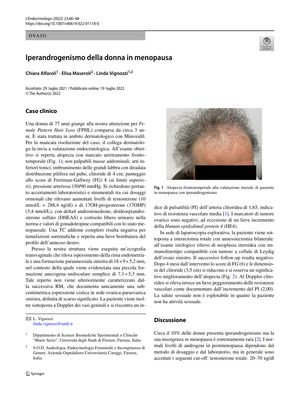Hyperandrogenism in Postmenopausal Women
July 2022
in “
L Endocrinologo
”

TLDR A 77-year-old woman with hair loss had high testosterone and 17OH-progesterone levels, but no significant findings on imaging.
A 77-year-old woman presented with Female Pattern Hair Loss (FPHL) for 3 years, unresponsive to Minoxidil. Endocrinological evaluation revealed significant frontotemporal alopecia, elevated testosterone (10 nmol/L) and 17OH-progesterone (3.4 nmol/L), with normal levels of other hormones and menopausal gonadotropin levels. Imaging showed no adrenal masses but a slight bulge in the right adnexa and a small, simple cyst in the left paraovarian region. Further characterization by MRI and Doppler was inconclusive, showing only a minor ovarian cyst of little significance.




